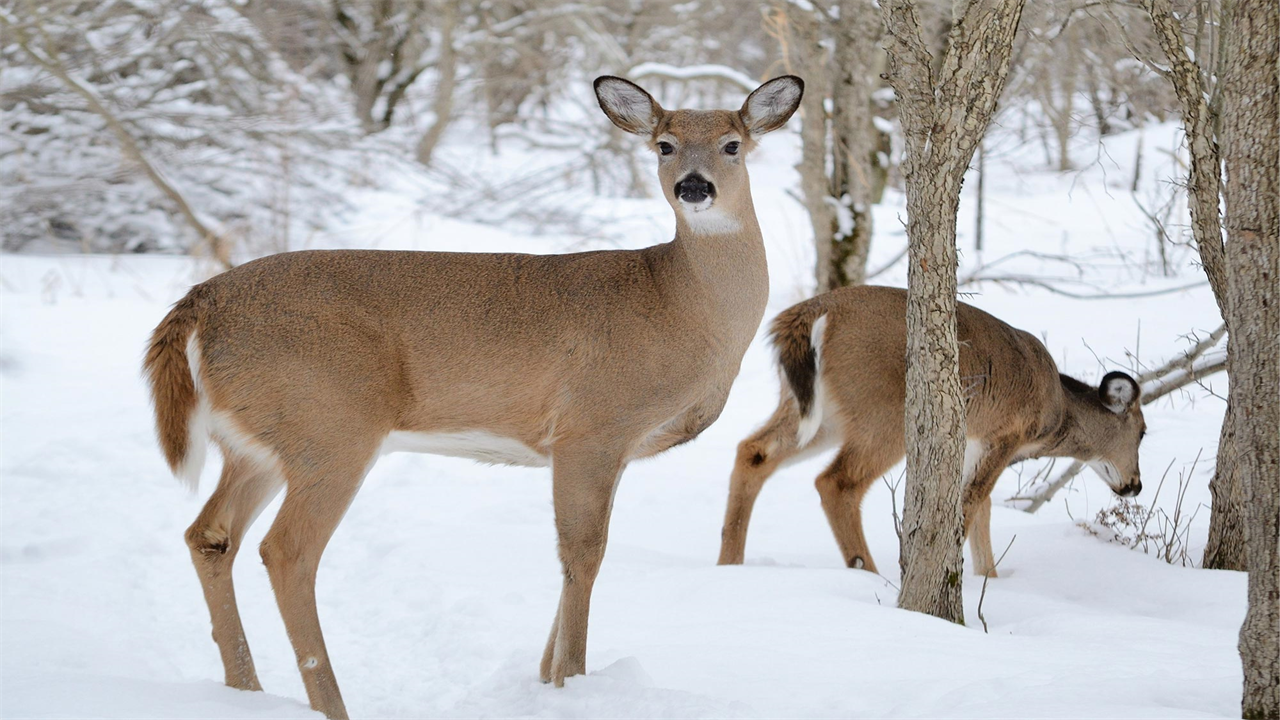Over 80% of Deer in Study Test Positive for COVID – They May Be a Reservoir for the Virus To Continually Circulate
0 View
Share this Video
- Publish Date:
- 6 November, 2021
- Category:
- Covid
- Video License
- Standard License
- Imported From:
- Youtube
Tags

Researchers found that more than 80% of white-tailed deer sampled in various parts of Iowa between December 2020 and January 2021 tested positive for SARS-CoV-2.
More than 80% percent of white-tailed deer sampled in various parts of Iowa between December 2020 and January 2021 tested positive for SARS-CoV-2. The percentage of SARS-CoV-2 positive deer increased during the study, with 33% of all deer testing positive. The findings suggest that white-tailed deer could be a reservoir for the virus to continuously circulate and fuel the emergence of new strains that could pose a threat to wildlife and potentially humans.
“This is the first direct evidence of SARS-CoV-2 virus in free-living species, and our findings have important implications for the ecology and long-term persistence of the virus,” said Suresh Kuchipudi, Huck Chair in Emerging Infectious disease. , clinical professor of veterinary and biomedical sciences, and associate director of the Animal Diagnostic Laboratory, Penn State. “These include spillover to other free-living or captive animals and possible spillover to human hosts. This, of course, highlights the need for many urgent measures to control the spread of the virus in deer and prevent it from flowing back into humans.”
According to Vivek Kapur, Huck Distinguished Chair in Global Health and Penn State professor of microbiology and infectious diseases, there is no evidence that SARS-CoV-2 can be transmitted from deer to humans, but he believes that hunters and people living near deer may want to take precautions, including during contact or handling with the animals, by wearing appropriate personal protective equipment and getting vaccinated against COVID-19,” Kapur said.
Previous USDA research found that 40% of white-tailed deer had antibodies to the coronavirus; However, Kuchipudi and colleagues note that those antibodies only indicate indirect exposure to SARS-CoV-2 or an immunologically related organism and did not demonstrate infection with SARS-CoV-2 or the ability to further transmit the virus.
In this new study — posted Nov. 1 on the pre-print server bioRxiv and will be submitted to a peer-reviewed journal — the team examined nearly 300 samples collected from deer in the state of Iowa during the peak of human COVID-19. 19 infection in 2020. The samples — extracted from deer retropharyngeal lymph nodes, which are located in the head and neck — were collected by the Iowa Department of Natural Resources as part of its routine surveillance program for chronic wasting disease. The team tested the samples for SARS-CoV-2 viral RNA using a real-time reverse transcription polymerase chain reaction (RT-PCR) test, which provides direct evidence of infection with the virus.
“We found that 80% of the deer sampled in December were positive for SARS-CoV-2, which represents a proportionally about 50 times greater burden of positivity than what was reported at the peak of infection in humans at the time,” Kuchipudi said. . “The number of SARS-CoV-2 positive deer increased from April to December 2020, with the largest increase coinciding with the peak of the deer hunting season last year.”
The team also sequenced the full genomes of all positive deer samples and identified 12 SARS-CoV-2 lines, with B.1.2 and B.1.311 accounting for approximately 75% of all samples.
“The viral lineages we identified correspond to the same lineages that were circulating in humans at the time,” Kapur said. “The fact that we found several SARS-CoV-2 lineages circulating within geographically restricted herds in the state suggests the occurrence of multiple independent human-to-deer spillover events, followed by local deer-to-deer transfer. possibility of deer flowing back to humans, especially in suburban areas with high deer densities.”
Kuchipudi added: “The study highlights the critical need to urgently implement surveillance programs to monitor the spread of SARS-CoV-2 within the deer and other susceptible species and to put in place methods to reduce potential reflux.”
Reference: “Multiple spillovers and further transmission of SARS-Cov-2 in free-living and captive white-tailed deer (Odocoileus virginianus)” by Suresh V. Kuchipudi, Meera Surendran-Nair, Rachel M. Ruden, Michelle Yon, Ruth H Nissly, Rahul K. Nelli, Lingling Li, Bhushan M. Jayarao, Kurt J. Vandegrift, Costas D. Maranas, Nicole Levine, Katriina Willgert, Andrew JK Conlan, Randall J. Olsen, James J. Davis, James M. Musser, Peter J. Hudson and Vivek Kapur, Nov 1, 2021, bioRxiv.
DOI: 10.1101/2021.10.31.466677
The Huck Institutes of the Life Sciences at Penn State, the United States Department of Agriculture, the National Institute of Food and Agriculture, the U.S. Fish and Wildlife Service Wildlife and Sport Fish Restoration Program, the Iowa Department of Natural Resources Fish and Game Protection Fund, National Institute of Allergy and Infectious Diseases, and the Houston Methodist Academic Institute Infectious Diseases Fund supported this research.
Other Penn State authors include Meera Surendran-Nair, assistant clinical professor; Michele Yon, research technologist; Ruth H. Nissly, research technologist; Lingling Li, research technologist; Bhushan M. Jayarao, professor of veterinary and biomedical sciences; Kurt J. Vandegrift, associate professor of biology; Costas D. Maranas, Donald B. Broughton Professor of the Department of Chemical Engineering; Nicole Levine, research technologist; and Peter J. Hudson, Willaman professor of biology. Other authors include Rachel M. Ruden, wildlife veterinarian, Iowa Department of Natural Resources; Rahul K. Nelli, research assistant professor, Iowa State University; Katriina Willgert, graduate student, University of Cambridge; Andrew JK Conlan, Senior Lecturer in Epidemiology, University of Cambridge; Randall J. Olsen, professor of clinical pathology, Houston Methodist and Weill Cornell Medical College, James J. Davis, computational biologist, Argonne National Laboratory and University of Chicago; and James M. Musser, professor of pathology and genomic medicine, Houston Methodist.










